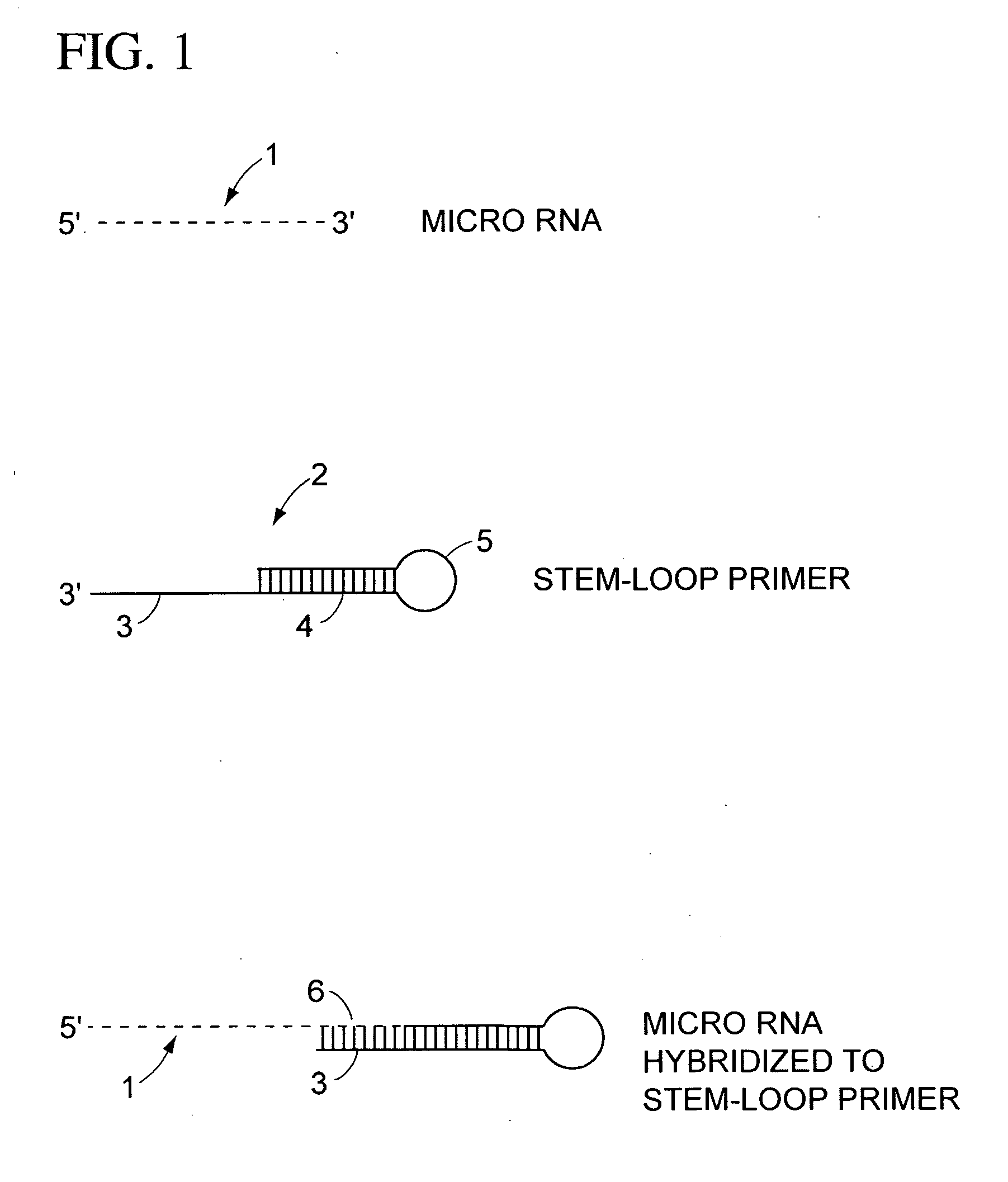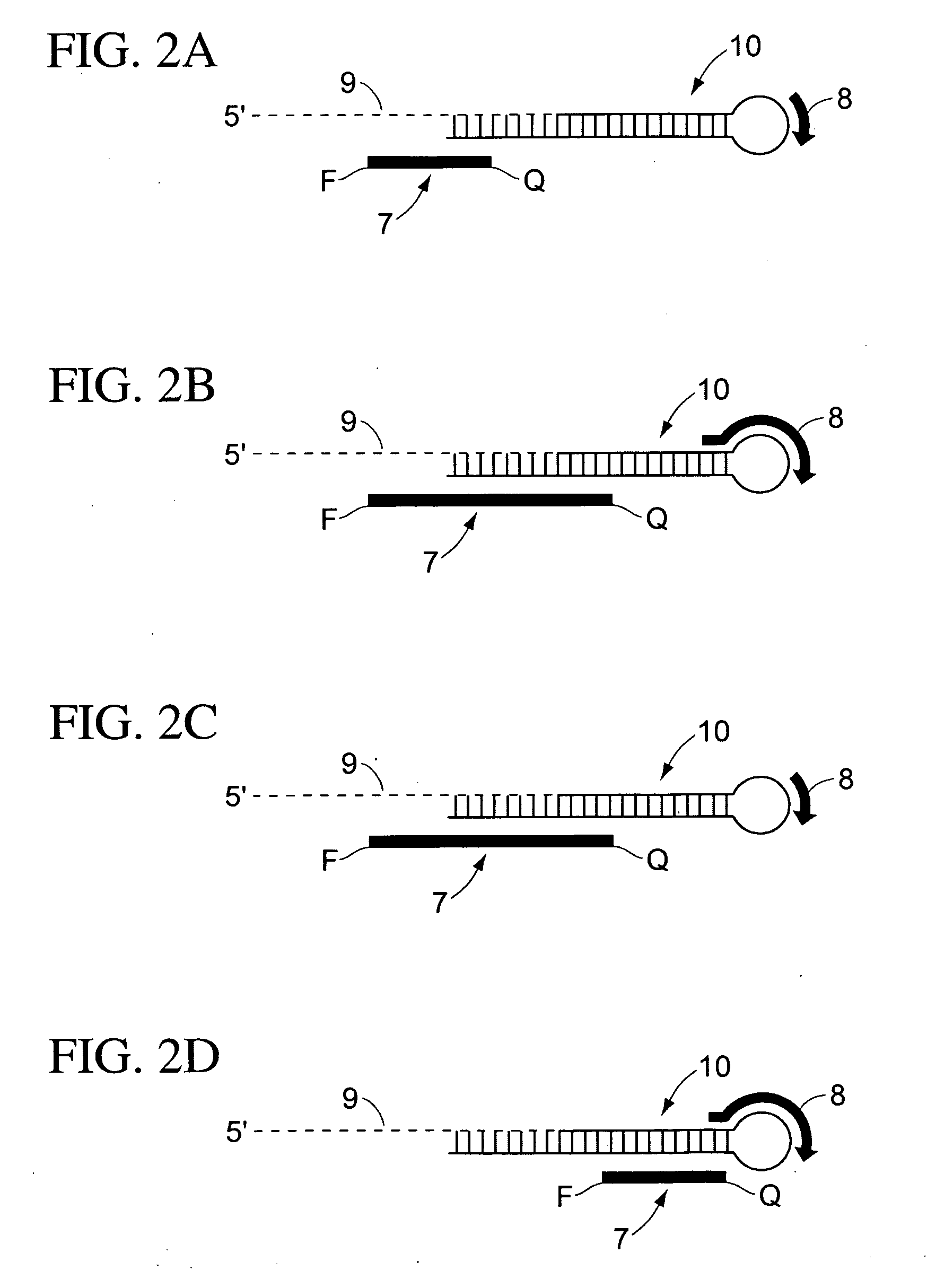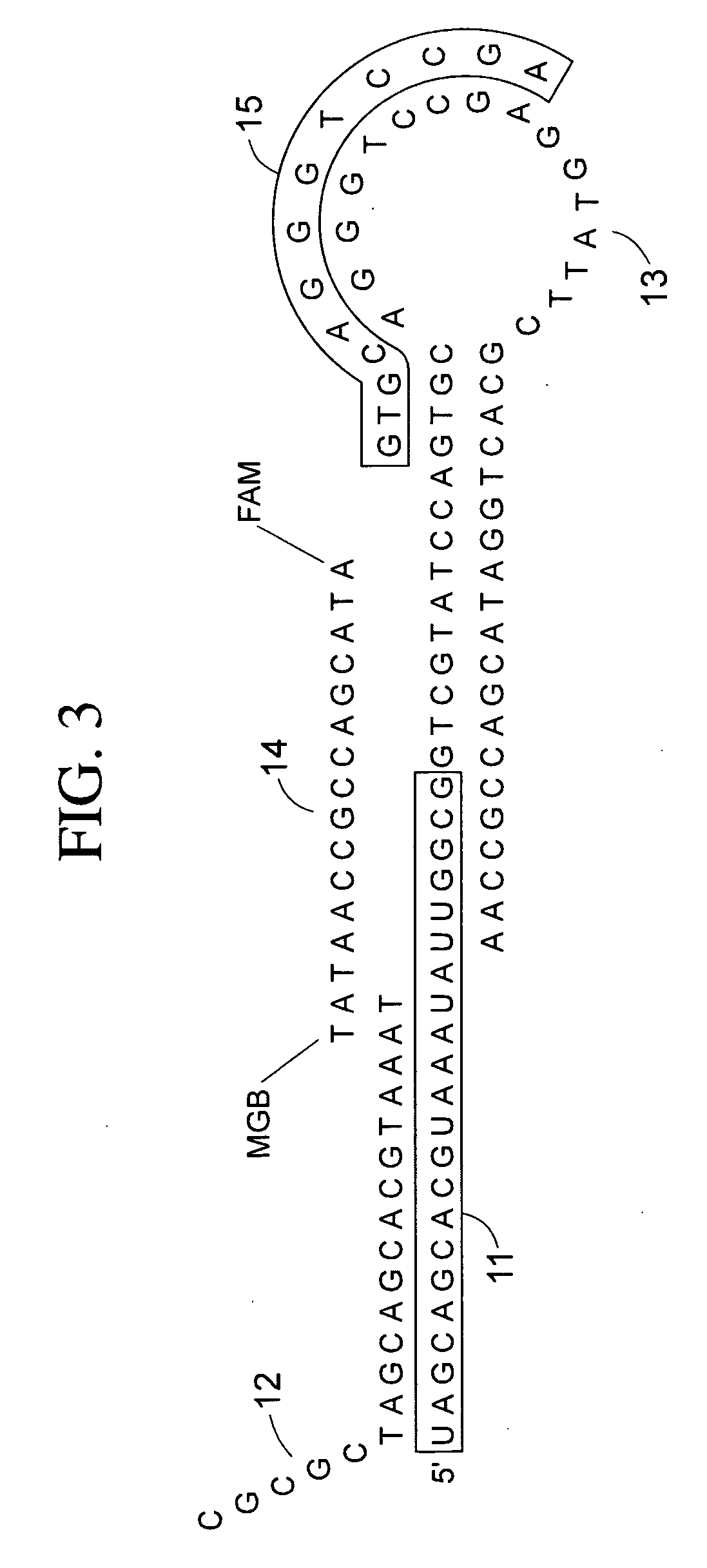Methods for characterizing cells using amplified micro rnas
- Summary
- Abstract
- Description
- Claims
- Application Information
AI Technical Summary
Benefits of technology
Problems solved by technology
Method used
Image
Examples
example 1
[0074] A protocol and reagents than can be used according to some embodiments of the present-teachings is shown in Table 1, proceeding from top to bottom in chronological order, (occasionally showing zeros were [reagent] is not applicable). Use of this method resulted in appropriately lower Ct values in a TaqMan® assay for miR-16 from a single stem cell, as compared to Ct values in a TaqMan® assay for miR-16 from two stem cells. The stem-loop reverse reverse transcription primer, forward primer, reverse primer, TaqMan® probe, that can be used to query miR-1 6 are:
Stem-Loop Reverse Transcription PrimerSEQ ID NO: 15′CTCAACTGGTGTCGTGGAGTCGGCAATTCAGTTGAGCGCCATA3′Forward PrimerSEQ ID NO: 25′ACACTCCAGCTGGGTAGCAGCACGTAATA3′TaqMan ProbeSEQ ID NO: 35′6-Fam-TTCAGTTGAGCCGCCAATA-MGB3′
[0075]
TABLE 1ReagentVolume (ul)[Stock][Final]STEP1 RT3× Mix10× Applied Bio-systems0.51011.5cDNA Archiving Kit bufferMMLV Reverse Transcriptase.335503.35(3.3 units / ul)1.00550 units / ul100 mM dNTP0.251005(100 mM / ul)...
PUM
| Property | Measurement | Unit |
|---|---|---|
| Electric charge | aaaaa | aaaaa |
| Electric charge | aaaaa | aaaaa |
| Electric charge | aaaaa | aaaaa |
Abstract
Description
Claims
Application Information
 Login to View More
Login to View More - R&D
- Intellectual Property
- Life Sciences
- Materials
- Tech Scout
- Unparalleled Data Quality
- Higher Quality Content
- 60% Fewer Hallucinations
Browse by: Latest US Patents, China's latest patents, Technical Efficacy Thesaurus, Application Domain, Technology Topic, Popular Technical Reports.
© 2025 PatSnap. All rights reserved.Legal|Privacy policy|Modern Slavery Act Transparency Statement|Sitemap|About US| Contact US: help@patsnap.com



